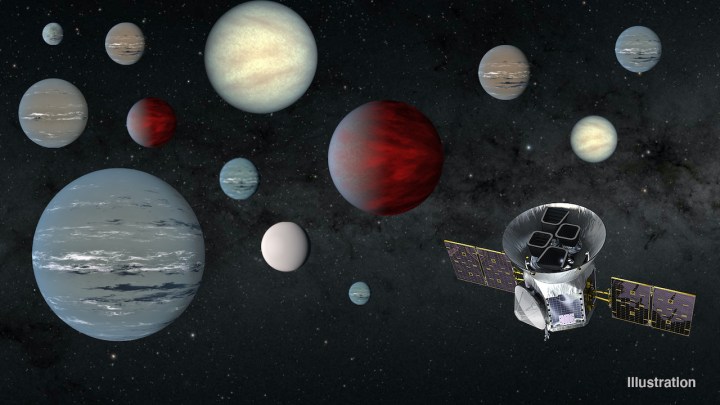
NASA’s Transiting Exoplanet Survey Satellite, or TESS, the planet-hunting satellite, is celebrating an impressive achievement: A total of more than 2,200 exoplanet candidates discovered in its first two years of operations.
Launched in 2018, the satellite searches for planets outside of our solar system using the transit method. This means that it looks for changes in the brightness levels of distant stars. When a planet passes between a star and Earth, the star’s brightness dips by a small amount. TESS looks out for these dips and uses them to infer the presence of a planet and to estimate its characteristics like size and mass.
All of the candidate planets that it found evidence for have now been cataloged in a new paper by researchers lead by Natalia Guerrero, a researcher at the Massachusetts Institute of Technology.
“The exciting thing is to look at the map of TESS exoplanets as a kind of to-do list — with 2,000 things on it,” Guerrero said in a statement.
TESS’s candidate discoveries including an Earth-sized planet in the habitable zone called TOI-700 d, which is around 100 light-years away and which is close enough to its small, cool red dwarf star that it could potentially have liquid water on its surface. It also discovered a system called TOI 125, a star similar to our sun which hosts at least three planets smaller than Neptune and possibly two more small planets as well. And there’s the extreme short-orbit planet LHS 3844 b, which orbits so close to its star that a year there lasts just 11 days and has a surface temperature of nearly 1,000 degrees Fahrenheit.
Since completing its original two-year mission, TESS is now on an extended mission to discover more exoplanets and to uncover more details about those it has already found evidence for. It takes time and patience to confirm the existence of a candidate planet, and so far around 120 of the candidates discovered by TESS have been confirmed.
“Now the community’s role is to connect the dots,” Guerrero said. “It’s really cool because the field is so young, there’s still a lot of room for discovery: those ‘Aha’ moments.”



